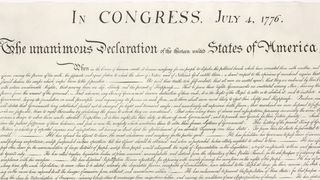“The truths of the Declaration of Independence are not limited by time or place,” John Quincy Adams wrote in 1839. “They belong to the nature of man in every age and every clime. They may be subdued, but they can never be suppressed. They are truths at Constantinople and Pekin, at London and Paris, at Charleston and at Philadelphia.” To Adams, the document showed that America was an idea and an ideology as much as it was a place.
The original writers of the Declaration intended to produce a document to reassure Americans of the justness of their cause, and to appeal to potential supporters abroad. But over time, the Declaration of Independence took on a much greater meaning. It was used as an announcement of a new nation’s founding, as a diplomatic appeal for recognition, as a statement of political philosophy and as a call to defend liberty at home and abroad.
Today, as our democracy comes under pressure at home and from hostile actors abroad, the Declaration is as relevant as ever. Not because our times mirror those of 1776 but because they are another step in the continuing evolution of the Declaration’s meaning, both within the United States and across the world.






